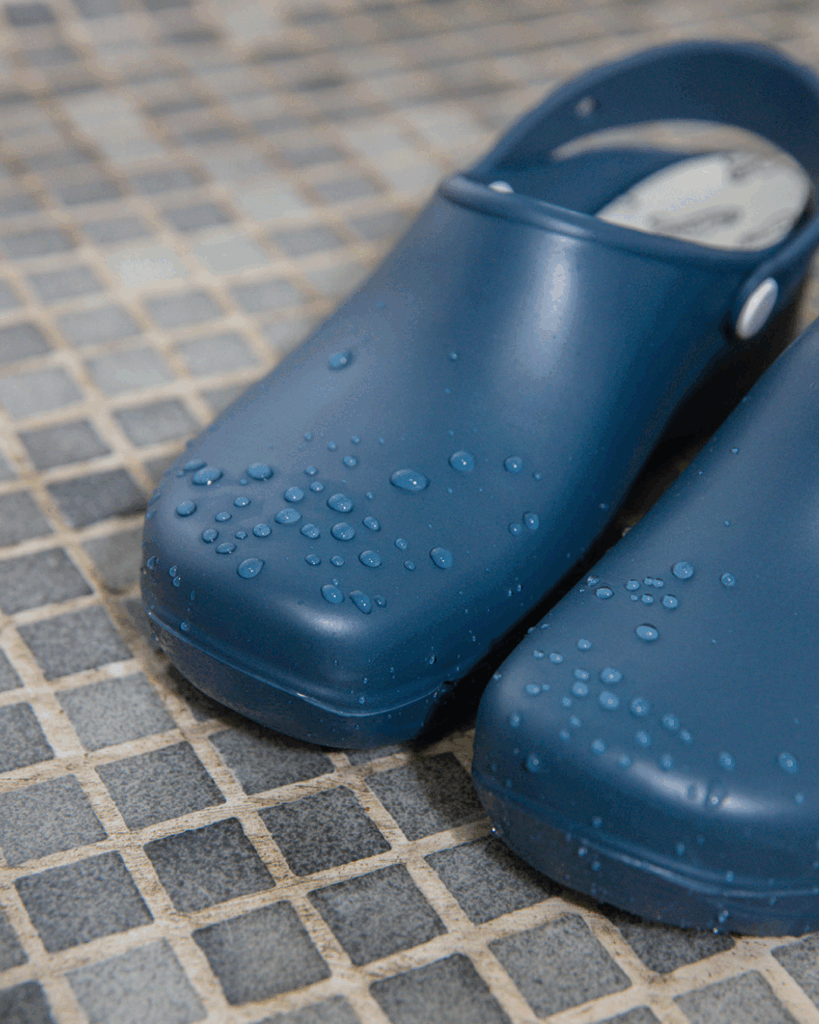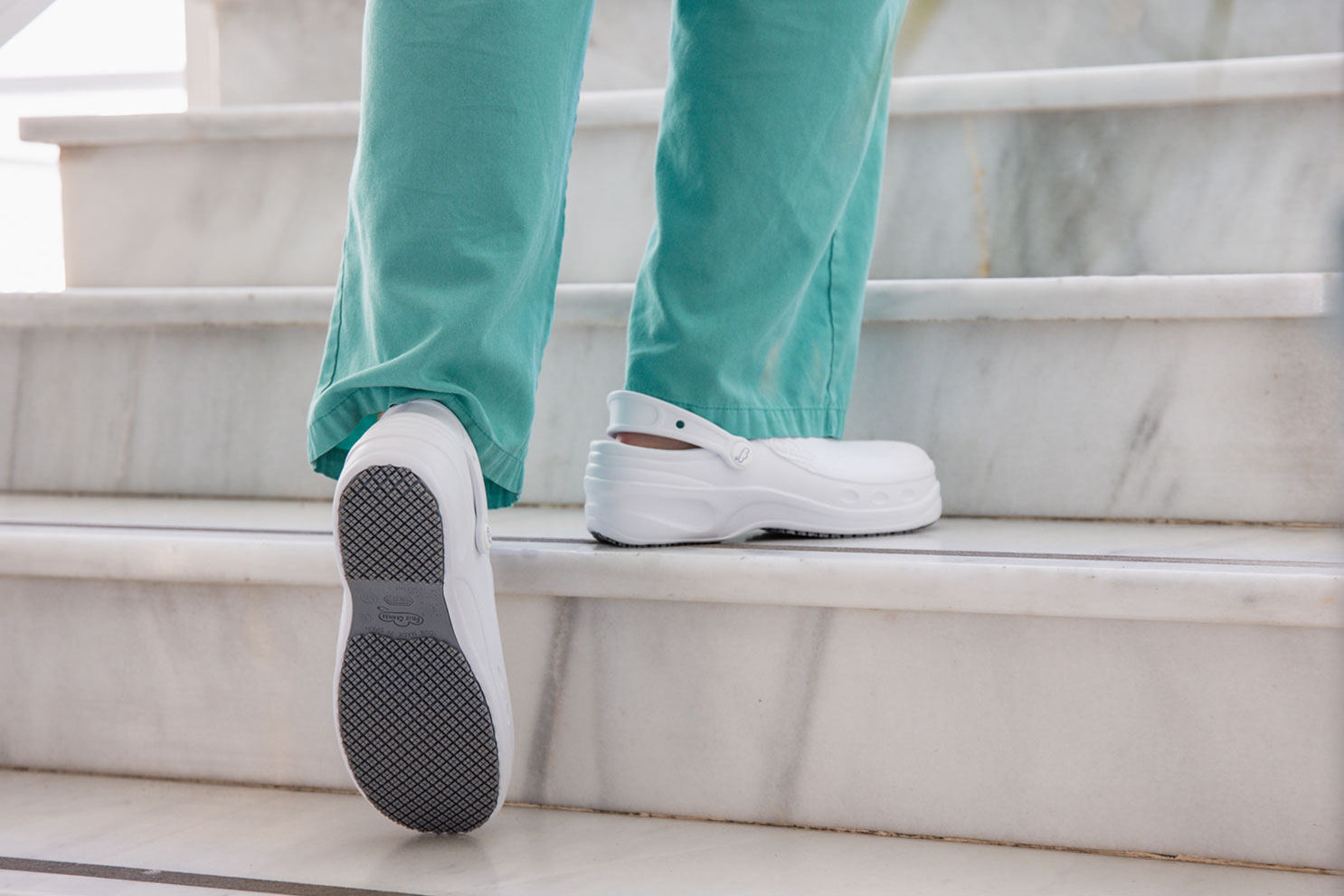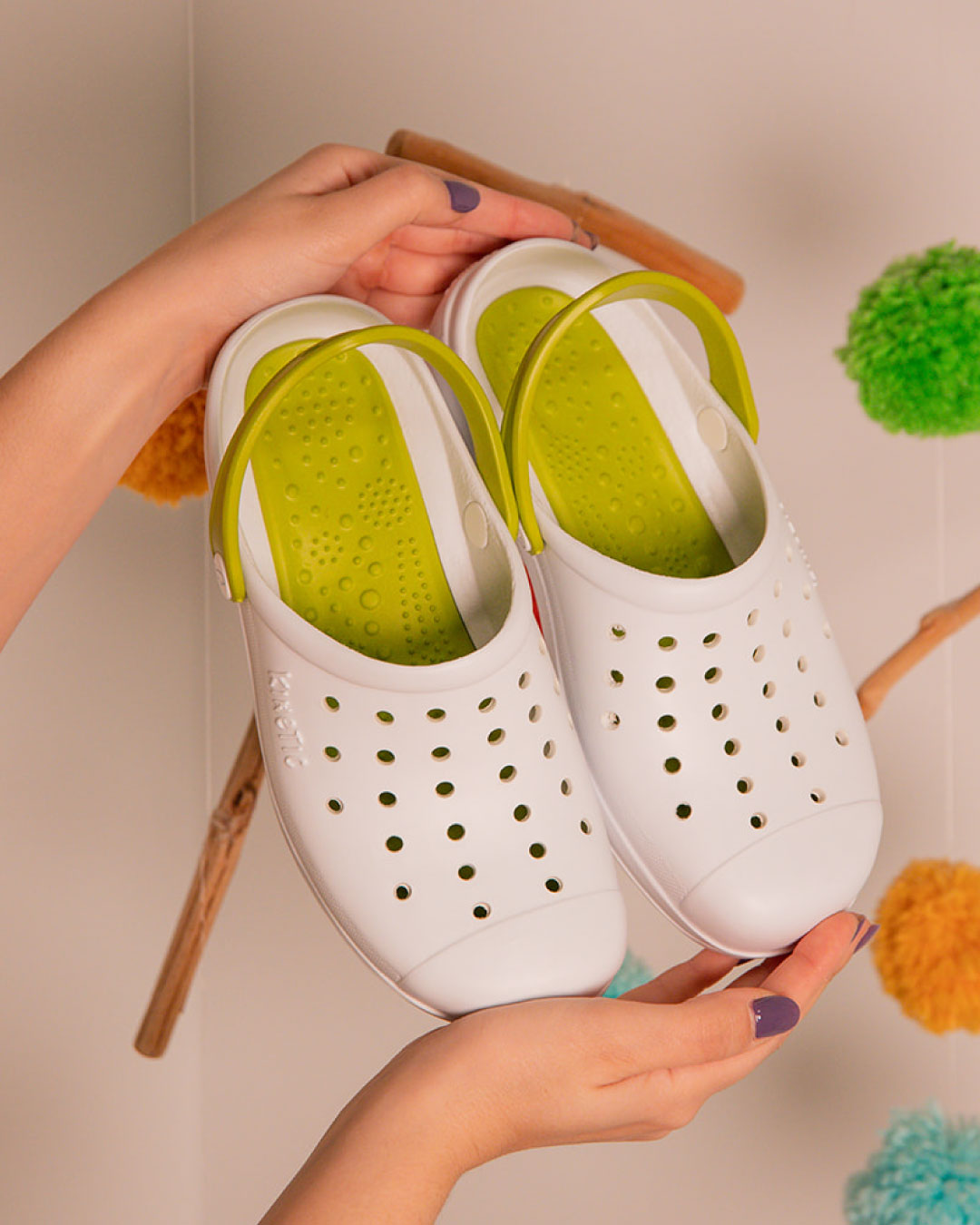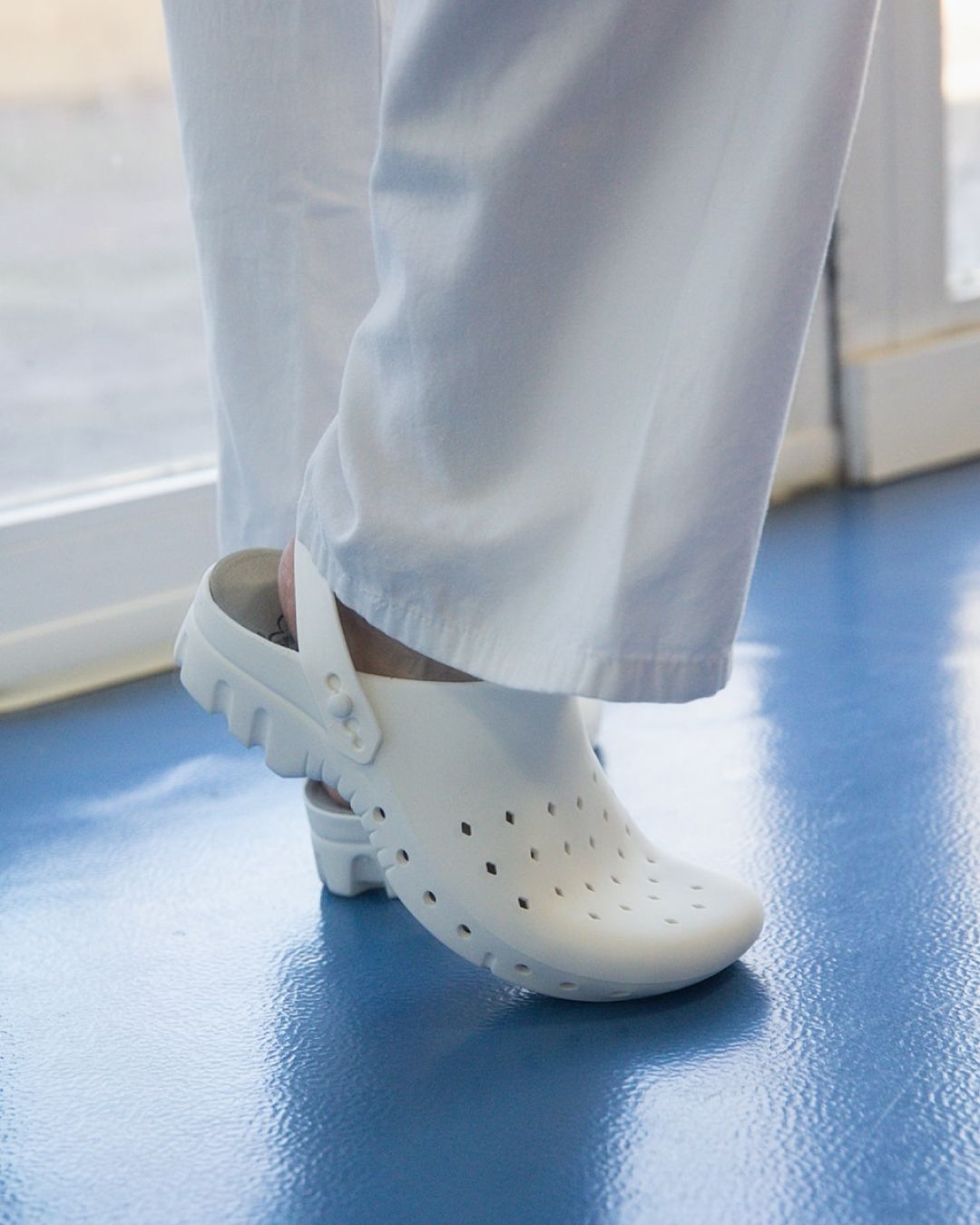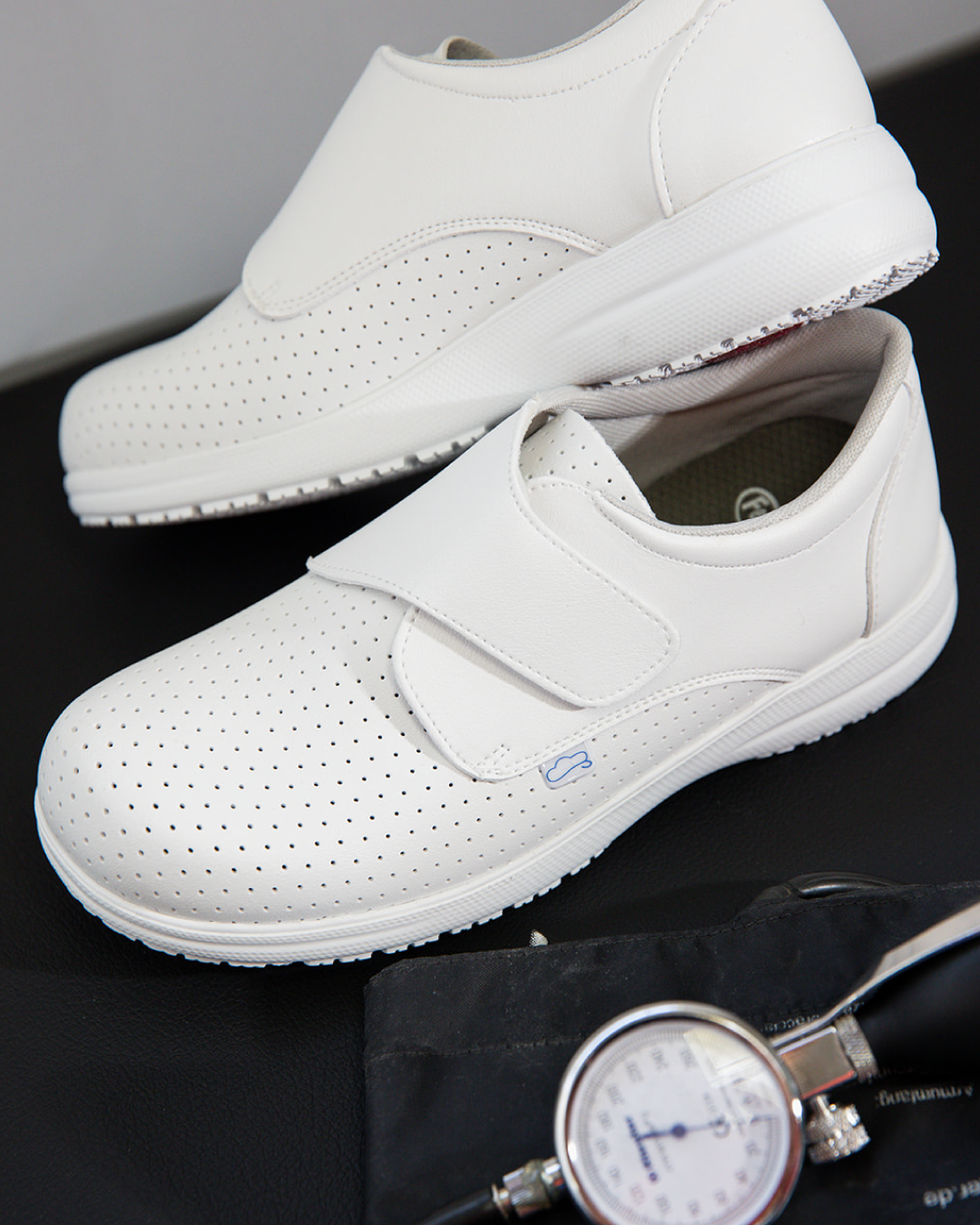Safety footwear is much more than an accessory in the workplace. It is an essential tool for accident prevention and injuries. Its proper maintenance and care are fundamental to ensure its effectiveness and durability in foot protection. Well-maintained footwear can be the line of defense between a worker and potential risks, while poor care can compromise its ability to provide safety.
At Feliz Caminar, as experts in ergonomic work footwear, we’ll tell you how you can avoid having to repair work shoe soles and keep them in perfect condition for a long time.
Importance of Safety Footwear Care
Footwear is a vital piece of personal protective equipment for any worker. Designed to protect against various workplace risks, from impacts to electrical or fall hazards, its proper functioning depends on how it is cared for.
Maintaining safety footwear in optimal condition not only extends its useful life but also ensures that it can effectively fulfill its function of protecting the worker’s feet. Well-cared-for footwear means an additional layer of safety in every step taken in the work environment, providing peace of mind and injury prevention. That’s why proper care of safety footwear should not be considered secondary, but essential for the safety and well-being of those who use it.
Basic Steps for Footwear Maintenance
Properly maintaining work shoes is necessary for them to last as long as possible and to fulfill their function of protecting feet. One of the most basic maintenance tasks is proper cleaning; keeping them clean is essential to ensure they don’t become a source of health problems, and dirty footwear also shows an unprofessional image.
Below are some tips to keep safety footwear in good condition for a long time.
How to Clean Safety Footwear
This type of footwear requires a slightly more delicate cleaning process than other shoes; it’s important that you do it this way:
- Remove excess dirt: before starting to clean, shake the footwear to remove surface dust and dirt.
- Use a soft cloth or brush: apply a little water and mild soap to a soft brush or damp cloth and gently clean the surface of the footwear.
- Avoid abrasive products: do not use strong chemicals or abrasives that can damage the footwear material. Opt for products specific to safety footwear if possible or neutral soaps.
- Air dry: after cleaning, let the footwear dry in open air, avoiding direct heat sources such as dryers or radiators, as this can damage the material.
How to Dry Safety Footwear
Once the shoes are well cleaned, you must dry them properly to avoid damage. To do it right, follow these steps:
- Remove insoles and laces: if possible, remove the insoles and laces to allow the footwear to dry evenly.
- Stuff with absorbent paper: place absorbent paper inside the footwear to absorb moisture and speed up the drying process.
- Leave in a ventilated place: put the footwear in a cool, ventilated place, preferably with good air circulation, to allow it to dry naturally.
- Avoid direct sunlight: do not expose safety footwear to direct sunlight, as this can cause materials to deform or discolor.
Proper Storage of Work Footwear
Once clean and dry, it’s important to store them appropriately; this part is also necessary for the maintenance of industrial safety footwear. To do it well, take note of these tips:
- Avoid damp places: store your shoes in a dry and well-ventilated place. Avoid damp areas, as this can cause mold formation and bad odors.
- Use fabric bags or boxes: store your shoes in breathable fabric bags or boxes that allow air circulation. This will help protect them from dust and keep them in optimal condition.
- Store in a cool, dark place: find a cool, dark place to store your safety shoes. Direct sunlight can damage materials and cause discoloration.
- Separate pairs: if possible, store shoes separately to prevent them from deforming or rubbing against each other. This is especially important if you have different types of safety footwear.
By following these simple cleaning, drying, and storage steps, you can maintain your safety footwear in optimal condition, ready to provide the necessary protection in your daily work. Remember that proper care extends the life of the footwear and ensures its effectiveness in preventing occupational hazards.
When to Replace Safety Footwear
The replacement of safety footwear is essential for foot protection at work and compliance with occupational safety standards. Observing visible wear, such as cracks or loose parts, as well as deformations in the footwear structure, are clear signs that it’s time to replace them.
Additionally, if the sole has lost its grip and traction, increasing the risk of slips, it’s an indication that the footwear is no longer fulfilling its protective function adequately. Maintaining footwear in good condition and replacing it when necessary is crucial to ensure the safety and health of workers in their work environment.
How to Choose the Right Safety Footwear
When choosing the right safety footwear, it’s important to consider several factors to ensure protection and comfort at work. Evaluate the type of risks present, such as electrical or fall hazards, and choose footwear with the appropriate protective features.
Additionally, consider the type of work and work environment to select from the different types of safety footwear available. The footwear should not only protect but also improve work efficiency by providing adequate comfort and support.
The care for occupational health is fundamental to avoid risks and accidents; safety shoes are a vital part of achieving this, which is why it’s so important to keep them in good condition and check them periodically.

